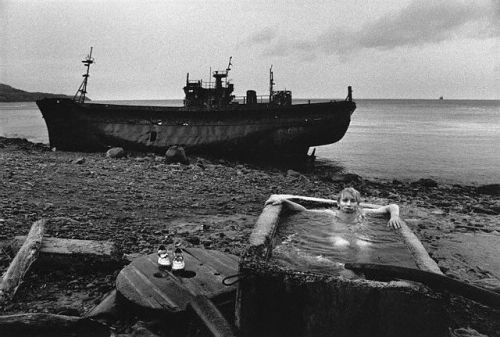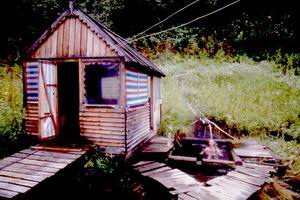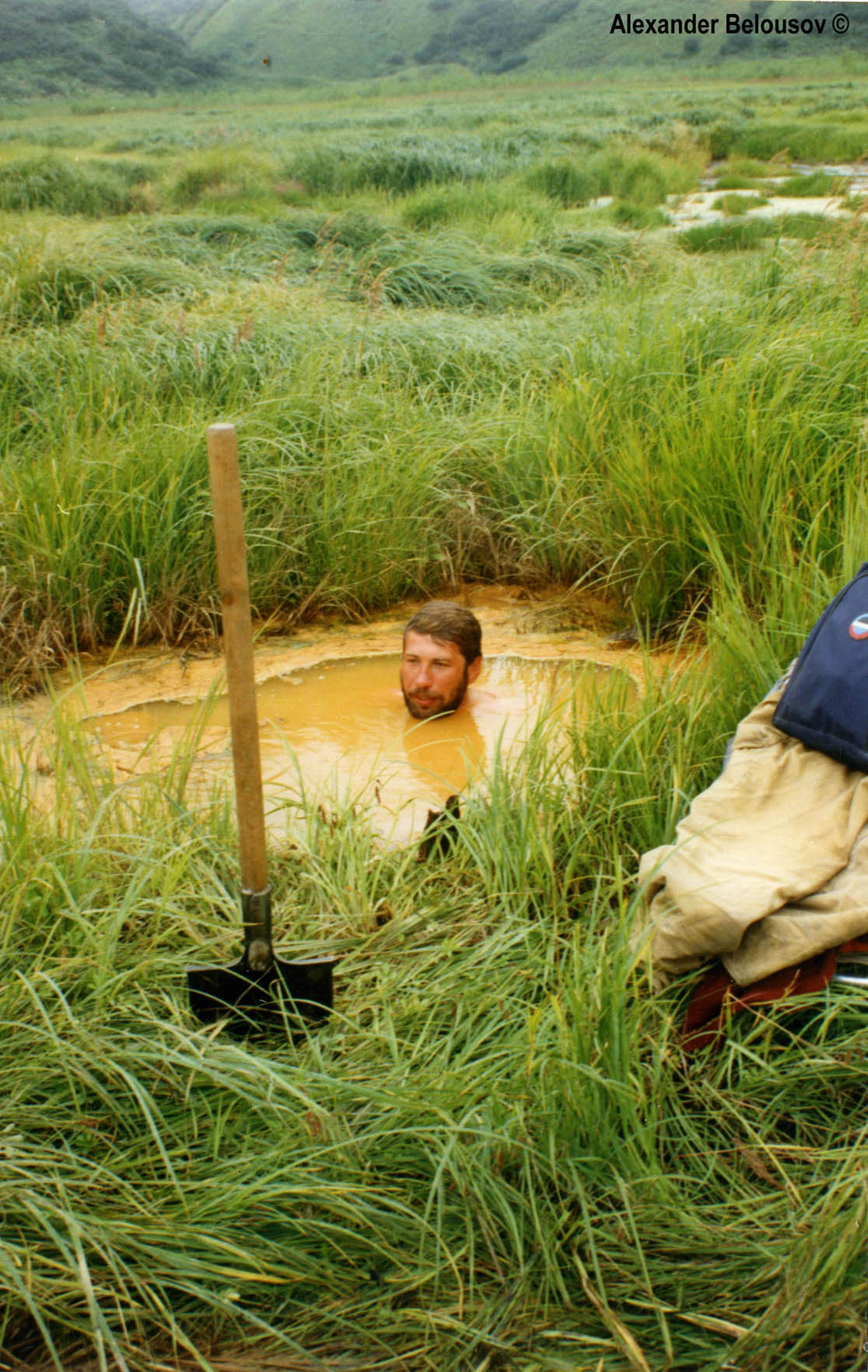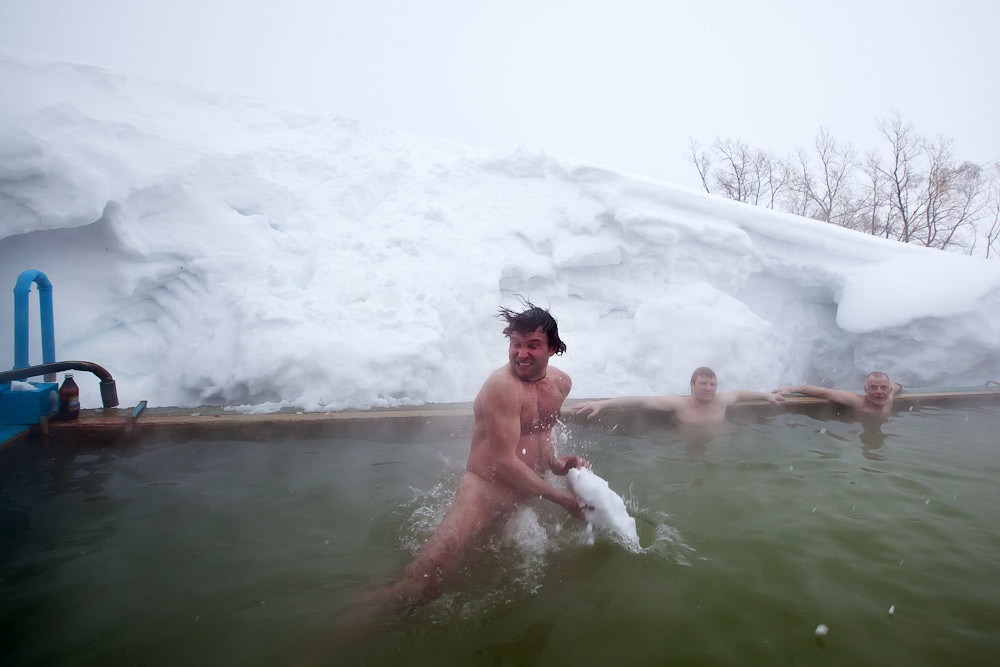Heading south
Following through with the feature on Eastern Russia's soaks, the smaller sections of the puzzle yet to be pieced together need to be filled in.
The Kuril islands are a string of (volcanic) islands which bridge the distance between Kamchatka and Japan's northern Hokkaido island.
Northern Paramushir island, one of the Kuril's biggest islands, is home to hot springs of Verkhneyuryevskiye (source) and there is also the mention of hot springs near Karpinsky volcano and near Ebeko (source). That said there's nothing much than these mentions.
Following through with the feature on Eastern Russia's soaks, the smaller sections of the puzzle yet to be pieced together need to be filled in.
The Kuril islands are a string of (volcanic) islands which bridge the distance between Kamchatka and Japan's northern Hokkaido island.
Northern Paramushir island, one of the Kuril's biggest islands, is home to hot springs of Verkhneyuryevskiye (source) and there is also the mention of hot springs near Karpinsky volcano and near Ebeko (source). That said there's nothing much than these mentions.
Continuing south, one of the Kuril islands is the uninhabited Ushishir, which according to Wikipedia translates from the Ainu language as hot spring, a nice name for an island. The island actually consists of two islands connected by a small spit. The southern part is called Yankicha.
Yankicha island features heavily on Kuril island cruises. It's hot spring seems too unique to miss. This site claims:
Others seem more inventive:
Closeby Rasshua island has 'numerous' hot springs.
Yankicha island features heavily on Kuril island cruises. It's hot spring seems too unique to miss. This site claims:
'Near the lip of the lagoon a srape in the beach fills with thermal waters;no natural hot spring bath can have a more spectacular setting',
a claim they attribute to Micheal Bright [1]. Others add:
'Yankicha is considered by many to be one of the most visually scenic islands in the Kurils. The ancient Ainu people used the thermal area of Yankicha for initiation rites that lasted three days and three nights, in which young men in ceremonial furs were bound together by ropes on wooden platforms over the boiling springs'.
Photo of the Yankicha soak. Without the furs...
'Maxim, an officer from our navigation team, tries the impromptu hot spring feed bath'.
Others seem more inventive:
'With characteristic Russian make-do-with-what-we-have-ness we managed to construct a makeshift pool with one of our tents! Who’d have thought we’d be getting all touristy-resorty in this desolate place? Was nice to have a warm dip, as if to make up for the earlier cold shower. Karma :)'.See also the Global Volcanism Programme's entry on Ushishir.
Closeby Rasshua island has 'numerous' hot springs.
Urup island is attributed to have hot springs on the flanks of the volcano Tri Sestry (source). As below:
hitokappu.bg:
 A 1992 photo by Shepard Sherbell taken on Iturup with the following caption:
A 1992 photo by Shepard Sherbell taken on Iturup with the following caption:
And that seems to wrap up this blog entry.
[Updated April 2015]
Notes:
[1] Bright, M. (2005) 1,001 Natural Wonders You Must See Before You Die. Barron's Educational Series, New York, U.S.A.
'Hot spring. Uninhabited [but ....] Urup, Kuril Island Горячий источник. Необитаемый остров Уруп, Курильские острова'.
The South Kurils
Iturup (sometimes spelt as Etorofu) is the northern most island of the southern Kurils. A no name hot spring is situated 'above' the town of Kuril'sk (source). Or Kurilsk.
On flickr are photo's of the Iwo River (?) hot spring (resort) by ataq411, while FoxySakh has a set of photo's of the island, including a more updated version of the photo below.
On flickr are photo's of the Iwo River (?) hot spring (resort) by ataq411, while FoxySakh has a set of photo's of the island, including a more updated version of the photo below.

'Man in Hot Spring in the Kuril Islands'.
Note also the idyllic hot waterfall in the lead photo to this blog. More photo's can be found here. Looks like a fantastic place to soak.
Interesting
South of Iturup and closest to Japan is the island of Kunashir. Wikipedia:
From damn interesting some biological significance:
Interesting
South of Iturup and closest to Japan is the island of Kunashir. Wikipedia:
'Kunashir is formed by four volcanoes which were separate islands but have since joined together by low-lying areas with lakes and hot springs'.Aaltjeaworldwiseexplorer added on a now defunct blog that
'... some of them natural, others contained in regular pools and a beach filled with hot black rocks, called “Black Beach” which is owned by the military'.Apparently this references to a ruin of a hot spring, which still affords soaking. Others mention hot beach. Below gives an impression, but not very beach like:
From the original Russian, googles translates this:
There is this photo of surely a beach hot spring, but don't know whether or not it's at the same location. But on Kunashir.'Well, locals, of course, use this feature preaktivneyshe: firstly, almost half of the South Kuril heated by geothermal station, and secondly, wherever possible air baths, swimming baths and Kupalenka. For example - that this is the source of "Sink" on Hot Beach. Charming place with three swimming pools with water 30, 40 and 50 degrees'.
From damn interesting some biological significance:
'In a hot spring on the Russian volcanic island of Kunashir, there lives a particular type of microbe which consumes poisonous carbon monoxide as nourishment, and exhales hydrogen. The microbe is called C. hydrogenoformans, and researchers at the The Institute for Genomic Research recently finished analyzing its complete genome sequence.
One day, the carbon monoxide waste from other industries may be used to feed vats of these microbes, and the resulting hydrogen could be collected and used to power the fuel cells of tomorrow'.
#кунашир#Tourism#туризм
Across the sea
Finally we cross over the Sea of Okhotsk at it's narrowest to the large island of Sakhalin.
The wikitravel entry on Nogliki mentions Goryachie Kluchi:
Or there is this reference:
Finally we cross over the Sea of Okhotsk at it's narrowest to the large island of Sakhalin.
The wikitravel entry on Nogliki mentions Goryachie Kluchi:
'Goryachie Kluchi (Горячие Ключи) is a volcanic mountain mountain area, and a village, on a tough dirt road north of town, it has a hot spring to boot.'This Russian language website has a couple of photo's of the hot spring and some descriptions which when translated reveals that it's 200 km, 3 hours from the town of Okha. It's a very basic shed on a deeper pond. Surrounding is a swamp with some healing mud.
Or there is this reference:
'Hot springs are waiting for tourists not only in the Kuriles, but also in the north Noglinskom area of Sakhalin'.
A 15m high hot waterfall on Sakhalin (or near the Baranski volcano. Oh, ... that's on Iturup!), from a Russsian photo website:
'Горячий водопад высотой 15 метров на 3-й серной речке'.
And that seems to wrap up this blog entry.
[Updated April 2015]
Notes:
[1] Bright, M. (2005) 1,001 Natural Wonders You Must See Before You Die. Barron's Educational Series, New York, U.S.A.

















